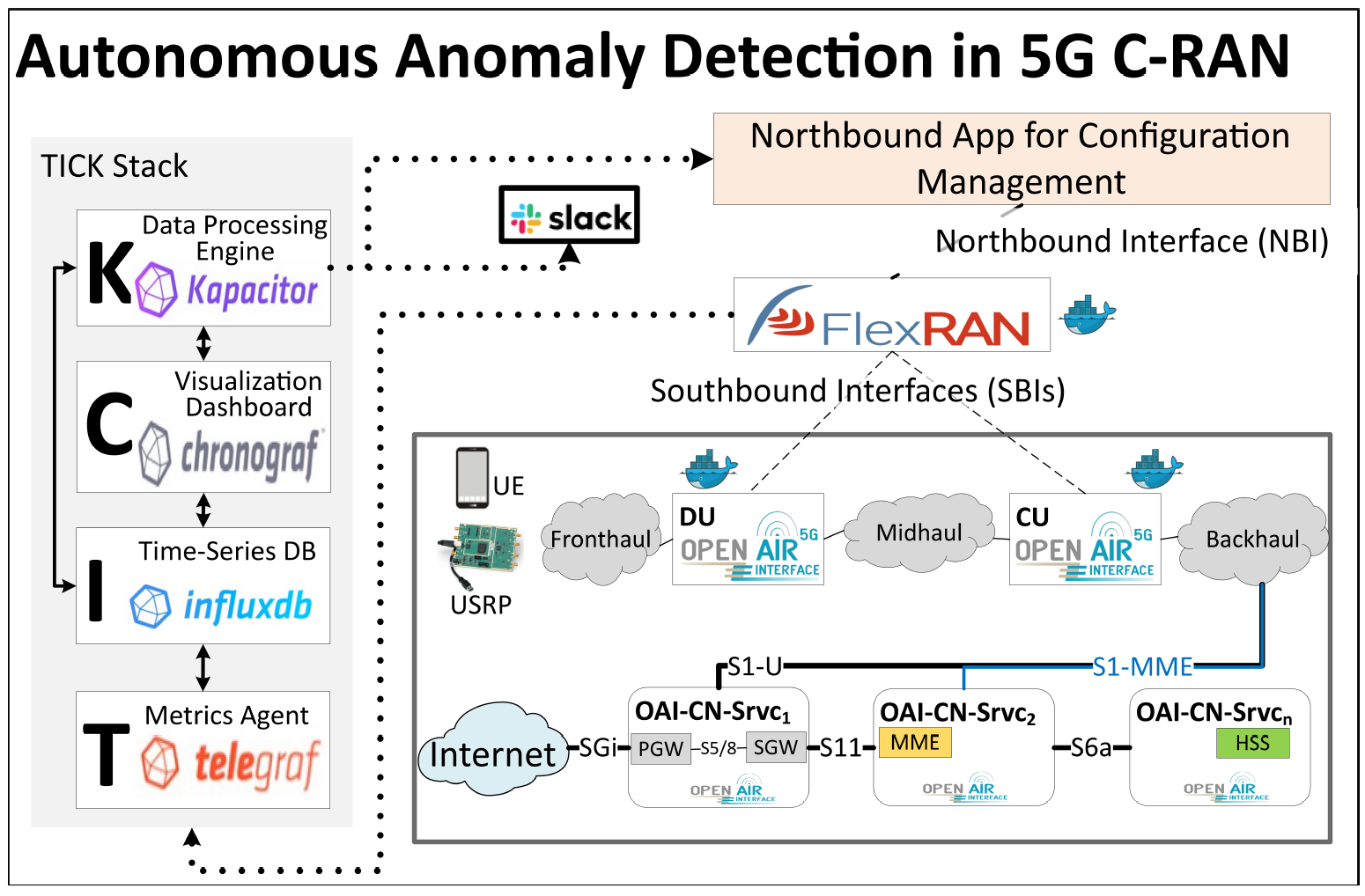Autonomous Anomaly Detector for C-RAN KPIs
Fifth Generation (5G) is anticipated to use Network Slicing (NS) to deliver multiple types of services suitable to heterogeneous requirements of vertical applications [1].
Such heterogeneity requires agility that employs dynamic lifecycle management of NS. However, Key Performance Indicators (KPIs) of such agile network can deteriorate fast.
Thus, Autonomous Anomaly Detection (AAD) on collected KPIs and its real-time analysis plays a crucial role in the performance management of 5G networks.
AAD allows to minimize related risks in a timely manner before it becomes out of control.
Indeed, managing a deterioration at its early stage would be much easier than when it is overlooked and related damages have taken place.
In this context, we exploit the periodic measurements genered by Cloud Radio Access Network (CRAN), next generation Node-B (gNB).
In this demo, we demonstrate the real-time stream-processing of KPIs to detect anomalies on C-RAN performance and auto-trigger planned responses as outcome of such detection to efficiently address deterioration and maximize service objectives.
Architecture:
We use OpenAirInterface-Core Network (OAI-CN) to implement 4G/5G-ready core network composed of Mobility Management Entity (MME), Home Subscriber Server (HSS), Serving Gateway (SGw) and Packet Gateway (PGw).
Detailed architecture of our orchestration platform is depicted below.

Below is the video for the demo.
Such heterogeneity requires agility that employs dynamic lifecycle management of NS. However, Key Performance Indicators (KPIs) of such agile network can deteriorate fast.
Thus, Autonomous Anomaly Detection (AAD) on collected KPIs and its real-time analysis plays a crucial role in the performance management of 5G networks.
AAD allows to minimize related risks in a timely manner before it becomes out of control.
Indeed, managing a deterioration at its early stage would be much easier than when it is overlooked and related damages have taken place.
In this context, we exploit the periodic measurements genered by Cloud Radio Access Network (CRAN), next generation Node-B (gNB).
In this demo, we demonstrate the real-time stream-processing of KPIs to detect anomalies on C-RAN performance and auto-trigger planned responses as outcome of such detection to efficiently address deterioration and maximize service objectives.
Architecture:
We use OpenAirInterface-Core Network (OAI-CN) to implement 4G/5G-ready core network composed of Mobility Management Entity (MME), Home Subscriber Server (HSS), Serving Gateway (SGw) and Packet Gateway (PGw).
Detailed architecture of our orchestration platform is depicted below.

Below is the video for the demo.
